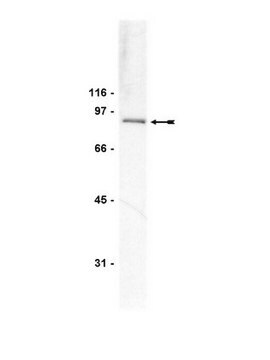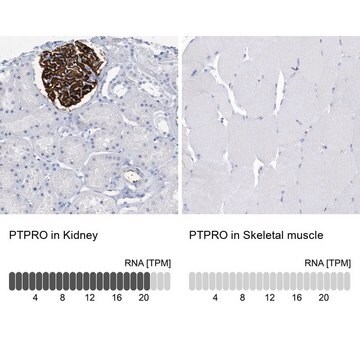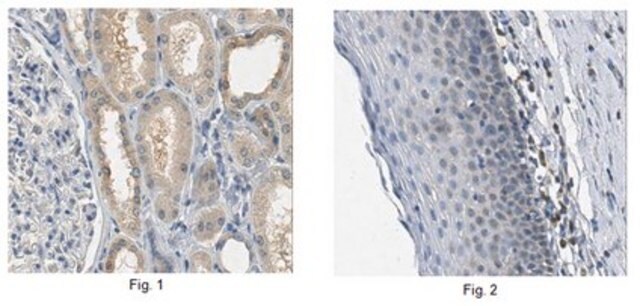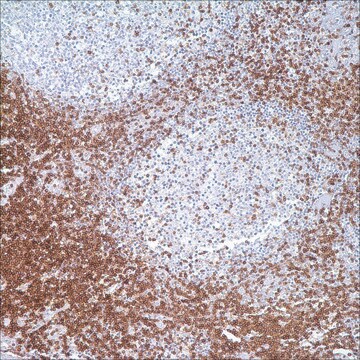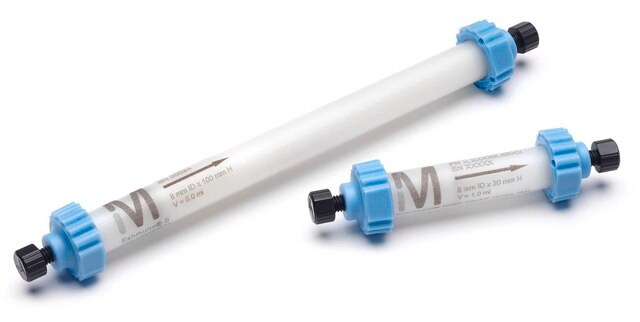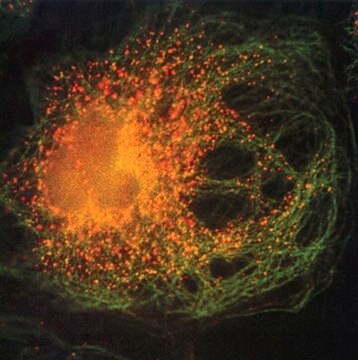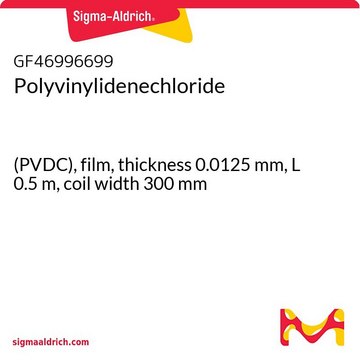MABS1158
Anti-PTPRT Antibody, clone 1F7
clone 1F7, from mouse
Sinónimos:
Receptor-type tyrosine-protein phosphatase T, R-PTP-T, RPTP-rho, RPTPrho, PTPRT
About This Item
Productos recomendados
biological source
mouse
Quality Level
antibody form
purified immunoglobulin
antibody product type
primary antibodies
clone
1F7, monoclonal
species reactivity
mouse, human, rat
technique(s)
western blot: suitable
isotype
IgG1κ
NCBI accession no.
UniProt accession no.
shipped in
wet ice
target post-translational modification
unmodified
Gene Information
human ... PTPRT(11122)
General description
Specificity
Immunogen
Application
Signaling
Developmental Signaling
Western Blotting Analysis: 0.5 µg/mL of this antibody detected the full-length and a cleaved form of PTPRT in brain and liver homogenates from wild-type, but not PTPRT-knockout mice (Courtesy of Dr. Zhenghe Wang, Case Western Reserve University, Cleveland, OH).
Western Blotting Analysis: 2.0 µg/mL of this antibody detected the full-length and a cleaved form of PTPRT in small intestine epithelium homogenate from wild-type mice (Courtesy of Dr. Zhenghe Wang, Case Western Reserve University, Cleveland, OH).
Western Blotting Analysis: A representative lot detected exogenously expressed human PTPRT using transiently transfected HNCC CAL-33 (squamous carcinomas of the tongue) cells expressing wild-type, PTPase domain mutatant (A1022E), or FN3-domain mutatant (P497T) PTPRT, as well as in transfected HNSCC PCI-52-SD1 cells stably expressing wild-type human PTPRT (Lui, V.W., et al. (2014). Proc. Natl. Acad. Sci. U.S.A. 111(3):1114-1119).
Quality
Western Blotting Analysis: 0.5 µg/mL of this antibody detected the full-length and a cleaved form of PTPRT in mouse brain tissue lysate.
Target description
Physical form
Storage and Stability
Other Notes
Disclaimer
¿No encuentra el producto adecuado?
Pruebe nuestro Herramienta de selección de productos.
Storage Class
12 - Non Combustible Liquids
wgk_germany
WGK 1
flash_point_f
Not applicable
flash_point_c
Not applicable
Certificados de análisis (COA)
Busque Certificados de análisis (COA) introduciendo el número de lote del producto. Los números de lote se encuentran en la etiqueta del producto después de las palabras «Lot» o «Batch»
¿Ya tiene este producto?
Encuentre la documentación para los productos que ha comprado recientemente en la Biblioteca de documentos.
Nuestro equipo de científicos tiene experiencia en todas las áreas de investigación: Ciencias de la vida, Ciencia de los materiales, Síntesis química, Cromatografía, Analítica y muchas otras.
Póngase en contacto con el Servicio técnico